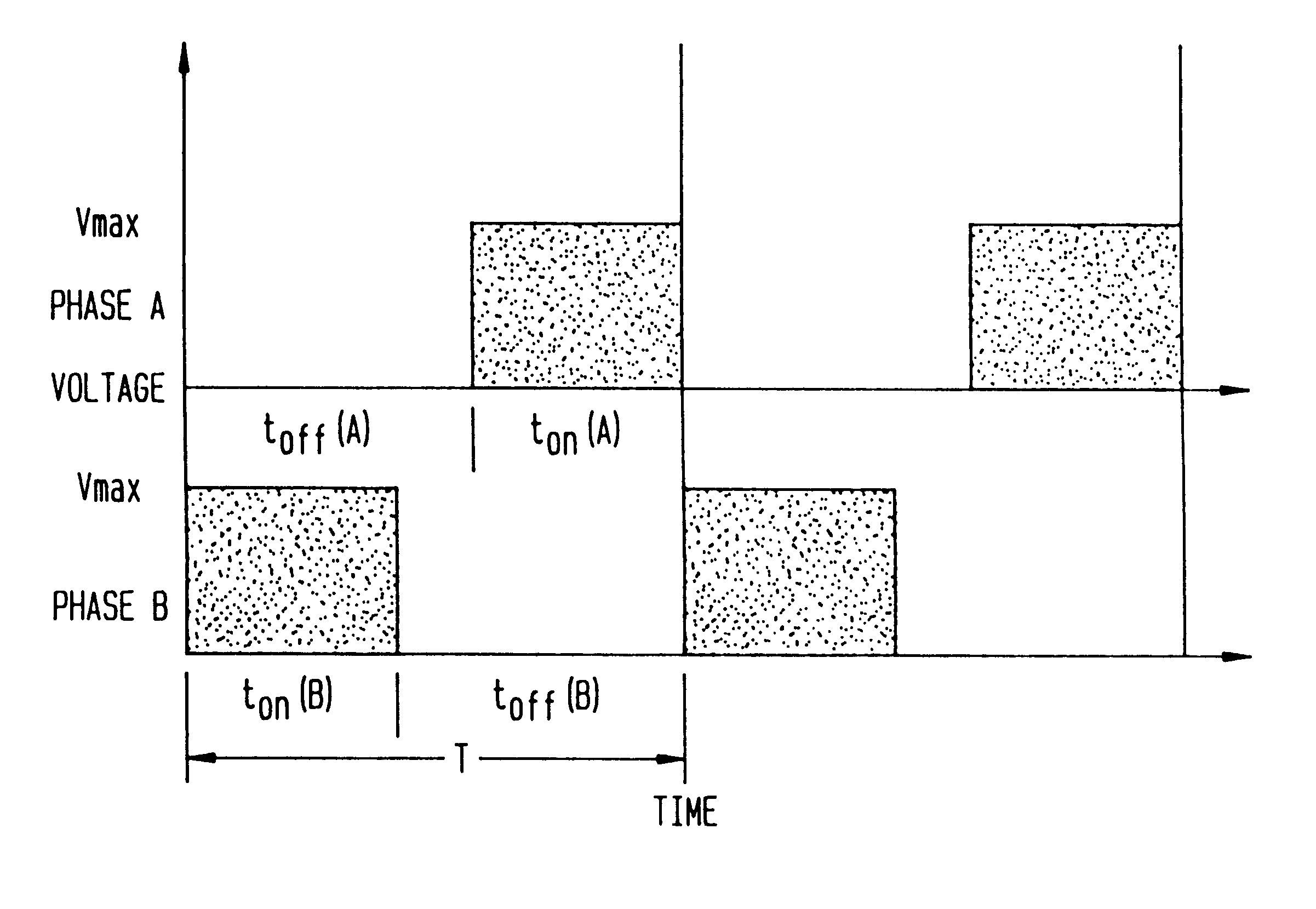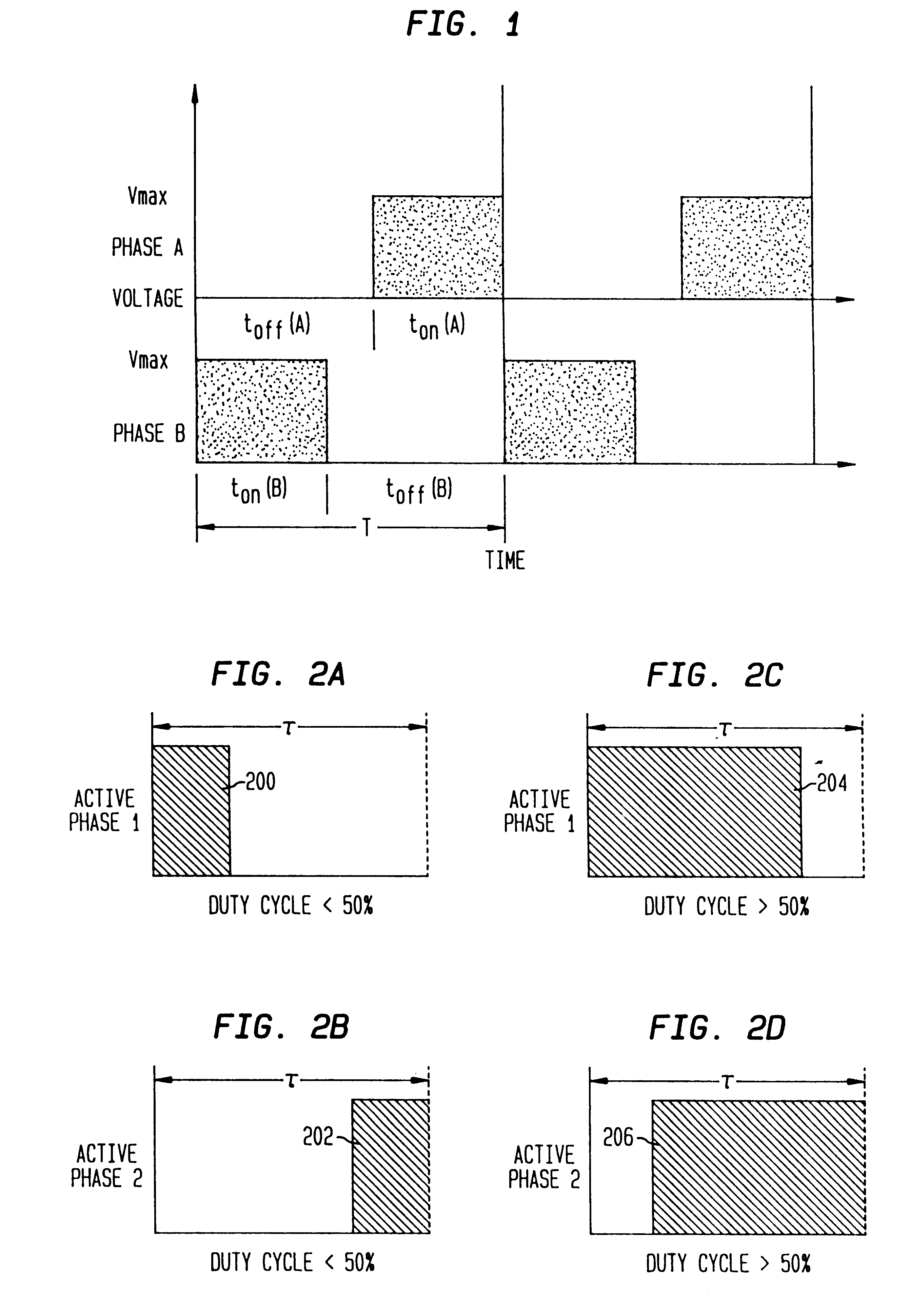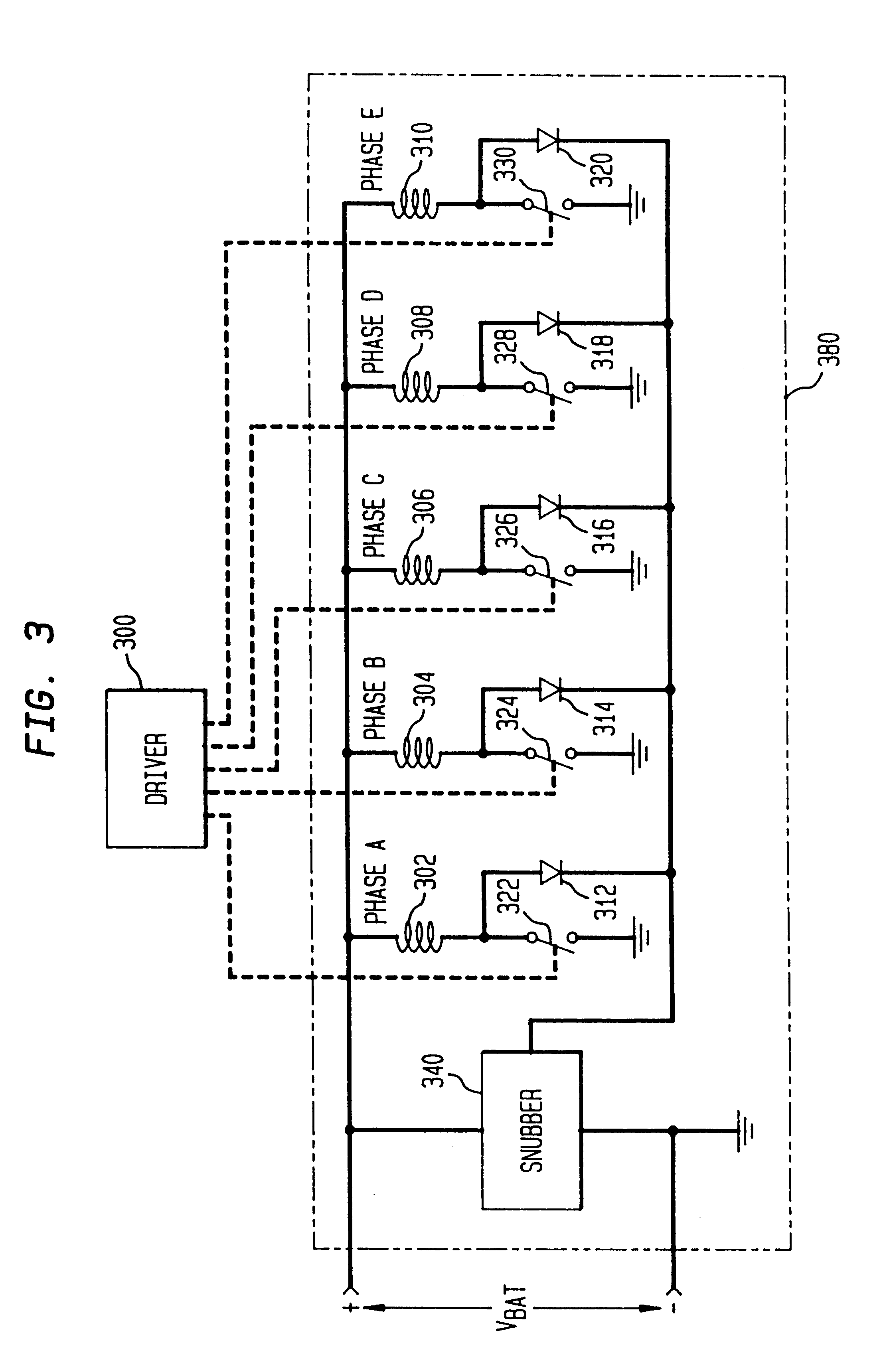Staggered pulse width modulation apparatus and method for EMI minimization in motor
- Summary
- Abstract
- Description
- Claims
- Application Information
AI Technical Summary
Problems solved by technology
Method used
Image
Examples
Embodiment Construction
The present invention provides a motor with activation stages having staggered pulses within respective pulsed signals to two or more windings of the motor. The present inventor has determined that the staggering of PWM pulses reduces electromagnetic interference (EMI) minimization in a DC brushless motor. Moreover, the staggered PWM pulses result in a significant reduction in current harmonic generation, as well as a significant reduction in the generation of conducted EMI due to delta -I noise.
FIG. 1 shows an example of the staggering of pulses within a PWM activation signal to activate two phases of a motor.
In particular, e.g. as shown in FIG. 1, two motor windings or phases are activated substantially simultaneously. However, the drive pulses to the respective motor windings or phases are staggered in time with respect to one another. As will be discussed in more detail herein below, staggered drive pulses reduce EMI radiation considerably with respect to the conventional PWM te...
PUM
 Login to View More
Login to View More Abstract
Description
Claims
Application Information
 Login to View More
Login to View More - R&D
- Intellectual Property
- Life Sciences
- Materials
- Tech Scout
- Unparalleled Data Quality
- Higher Quality Content
- 60% Fewer Hallucinations
Browse by: Latest US Patents, China's latest patents, Technical Efficacy Thesaurus, Application Domain, Technology Topic, Popular Technical Reports.
© 2025 PatSnap. All rights reserved.Legal|Privacy policy|Modern Slavery Act Transparency Statement|Sitemap|About US| Contact US: help@patsnap.com



